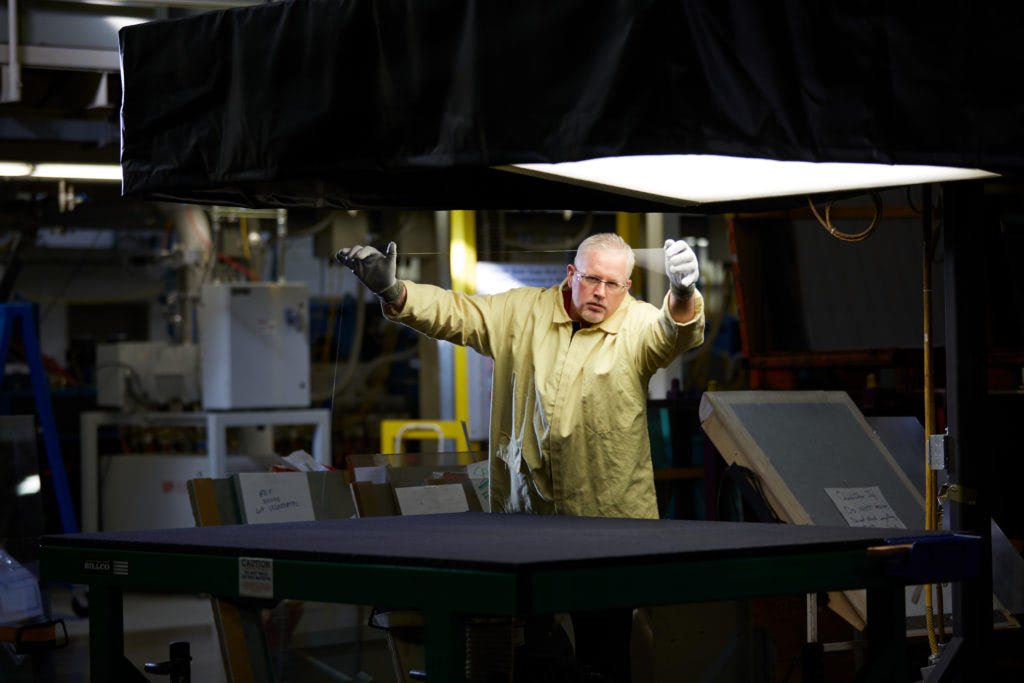Whether your customer is a small coffee shop operating a drive thru or a local grocer looking for digital wayfinding signage, you want to ensure that their brand is not only prominently displayed but is protected from external elements like ultraviolet radiation. Throughout your customers’ search for the right way to display their products, they will likely stumble across a variety of industry terms, including anti-reflective and anti-glare. As an industry expert, you know the difference between the two, but in casual conversation, they are sometimes used interchangeably.
Importance of Product Education
If a potential customer is searching for the highest quality product to display their products and services, they should know exactly what they’re getting and how premium anti-reflective glass can save them money in the long run. Product education is vital to your success.
Educating new and existing customers that each term has different meanings and can impact how images are displayed is a critical element to growing your customer base. While both anti-glare and anti-reflective glass treatments serve the same purpose — improving the visibility of an image display — there are some pretty significant differences conveyed in the final product. Below we dive into the differences between anti-glare and anti-reflective and how to effectively communicate them to your customers.
What is Anti-Glare Glass?
Anti-glare coating is a treatment method on glass that ensures external light sources, such as bright sunlight or other interior ambient lighting, do not affect the visibility or legibility of a framed image or document. Anti-glare acrylic has a matte finish that diffuses reflected light by reducing the coherence of the reflected image, but can, in turn, somewhat distort an image behind the glass caused by the diffusion’s loss of sharpness.
Anti-glare coatings tend to use diffuse particles or small etchings on the glass surface to achieve the desired visibility outcome. It is generally used for outdoor displays or for indoor areas that have bright, intense lights whenever a loss in image quality isn’t much of an issue; however, it is not recommended to be used in dimly lit areas since the blurriness/graininess of the coating will be much more obvious.
What is Anti-Reflective Glass?
Anti-reflective glass is the gold standard in thin-film technology and is designed to minimize reflections by disrupting the energy contained in light waves, causing them to flow out of sync. The disrupted wave pattern virtually eliminates all reflection from the acrylic surface, resulting in a crisper image and true-to-life colors. The scientific term for this phenomenon is the destructive interference of light. Additionally, anti-reflective glass coating does not consider only external light sources, but rather both internal and external ones.
The best way to communicate these differences to your customers is through multiple digital channels and touchpoints. Email, social media, Google My Business and product education located on your website go a long way in crafting a memorable customer journey.
Read, ‘Brand Benefits of Anti-Reflective Glass.’
Which is Right For Your Customer?
Almost everything is better with anti-reflective glass, but there are specific use cases that make anti-reflective the far superior choice. For example, if your customer is in the market for outdoor signage to showcase their brand, anti-reflective glass will provide minimal reflection, maximum transmittance and protection from the elements (UV, fog, salt, impact resistance).
Ideal applications for anti-reflective glass:
- QSR digital menus
- Digital retail signage
- Wayfinding signage
- Glassdoor merchandisers and refrigerated displays
- Outdoor large-scale lighting
See the Side by Side Difference
About TruVue Vista Anti-Reflective® Glass
Our team understands the critical nature of cosmetic specifications to ensure outstanding product quality. Tru Vue Vista AR® Glass offers superior outdoor performance, is impact-resistant, measures less than 1% total light transmittance, and enhances the viewing experience for any product you put behind it. This type of anti-reflective glass is one of the most versatile options on the market (check out our anti-reflective post temperable glass too) and is a premium product that can be customized to your unique needs and specifications.
Contact our team of experts for more information on Tru Vue Vista AR® Glass or review product specifications here.
Additional Reading:
Share this Article:
This article is intended for educational purposes only and does not replace independent professional judgment. Statements of fact and opinions expressed are those of the author(s) individually and, unless expressly stated to the contrary, are not the opinion or position of Tru Vue or its employees. Tru Vue does not endorse or approve, and assumes no responsibility for, the content, accuracy or completeness of the information presented.
